Watershed Management Pollution Prevention
Water quality of the Indian River Lagoon and the St. Johns River has declined due to excess nutrients, sediment and other pollutants carried by stormwater. Everyone can play a part in helping to protect the Indian River Lagoon by following these pollution prevention tips:
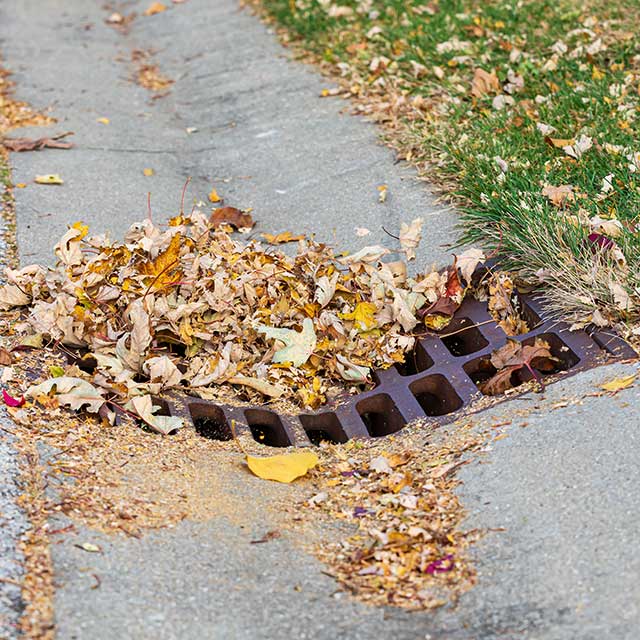
Yard Waste
To prevent the contamination of waterways, avoid blowing lawn clippings into the street or dumping them down the storm drain. Once it rains, those leaves and grass clippings and yard waste are washed into the Indian River Lagoon. The nutrients contained in the waste cause algae blooms that decrease the amount of light and oxygen in the water and sometimes result in fish and sea grass kills.
To prevent yard clippings from entering storm drains do not pile yard waste and tree branches on storm drains. If possible, wait to put them out until the night before your yard trash pick up and make sure that they are placed on the grass, not the driveway or any other any impervious surfaces. If you use the plastic bins, avoid placing place them on or near storm drains because in a rainstorm, they can spill into the drain. It is recommended to leave grass clippings on your lawn after mowing and reuse other yard waste as mulch by spreading them under bushes and flower gardens. The nutrients in yard waste make them the best and cheapest fertilizers your lawns and gardens can receive.
Composting is another way to reuse leaves, grass clippings and other small cuttings. By mixing these items with household wastes such as vegetable and fruit scraps, eggshells and coffee grounds, you create a perfect medium for improving soil structure, promoting soil fertility and stimulating root development in plants.
For more information on composting, check out these links:
US Environmental Protection Agency - Composting
USA Natural Resources Conservation Service - Composting
Use Florida Native Plants in Landscaping
Florida native plants are recommended for landscaping because these plants have adapted to Florida's soils, water and pests. They require less fertilizer than exotic plants. It is important to match the plant species to the conditions in your yards. To learn more about native plants and which ones will work best in your yard, visit the Native Plant Society's website . There are two chapters in Brevard County.
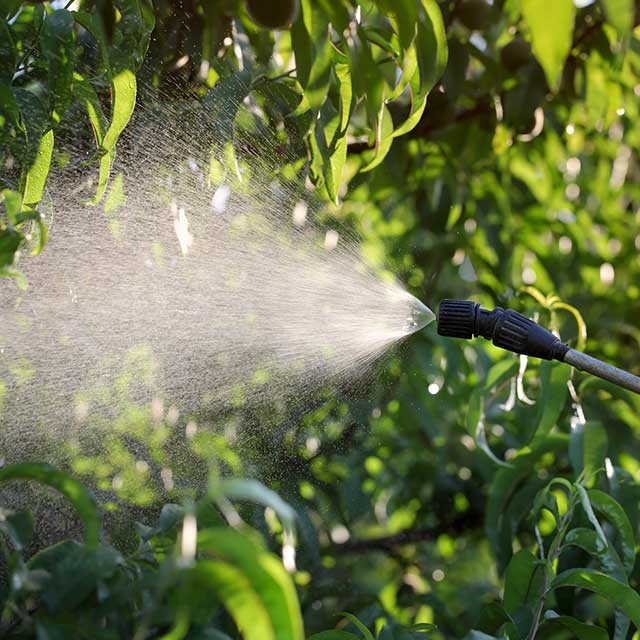
Fertilizers and Pesticides
In 2013, the Brevard County Commission and most city boards voted to adopt a summer fertilizer ban. The rainy season ban is in effect from June 1 to September 30.
For more information about your community fertilizer ordinance, visit: University of Florida Institute of Food and Agricultural Sciences and search for ordinances.
Only “No Phosphate Fertilizer” as defined in Rule 5E-1.003(2) may be applied to turf or landscape plants in the County without a soil or plant tissue deficiency as verified by a University of Florida, Institute of Food and Agriculture Sciences, approved testing methodology.
The nitrogen content of fertilizer applied to turf or landscape plants within the County shall contain slow release, controlled release, timed release, slowly available, or water insoluble nitrogen per guaranteed analysis label of not less than 50%. Caution shall be used to prevent direct deposition of nutrients in the water.
The three numbers on the front of the bag should be selected for the type of plant you are fertilizing. The numbers represent the fertilizer's nitrogen (first number), phosphorus (second number) and potassium (third number) contents. High nitrogen fertilizers on a plant that does not need it is a waste of money and will eventually be washed into waterways by stormwater where it will fertilize algal blooms.
Use environmentally friendly alternatives to pesticides, including insecticidal soaps and horticultural oils which both can be made easily at your home. To make insecticidal soap, simply mix 2 tablespoons of liquid dish washing soap and a gallon of water. These soaps can be used to combat whiteflies, aphids and spider mites. Horticultural oils can be made by combining 2 tablespoons of vegetable oil with 2 tablespoons of liquid dish washing soap and a gallon of water. This alternative helps to eliminate problems with mealybugs and thrips.
Watering your lawn correctly can also help prevent insect infestation. When grass is over watered, it becomes a breeding ground for insects that like to feed on roots. To find out when to water your lawn in compliance with the irrigation rule, please visit the St. Johns River Water Management District at Water restrictions .
Integrated Pest Management (IPM) promotes use of the least toxic method of controlling pests in the garden. IPM emphasizes the following:
- Tolerate some insect and leaf damage. This allows beneficial predatory insects and birds to locate and naturally solve a pest problem.
- Treat for specific pests, treat only in affected areas, and use the least toxic method of control. This will protect your community and allow beneficial birds and insects to restore and maintain the natural balance in your garden.
- To help prevent leaching and run-off of fertilizers, only use mixes that contain at least 50% slow release nitrogen.
- To maintain healthy grass free of diseases and pests, mow grass to a height of 3 inches in sun, or 4 inches in shade.
- More is NEVER better. ALWAYS read and follow label instructions. For more information, get the guide "Fertilizing for Healthy Plants and Clean Water".
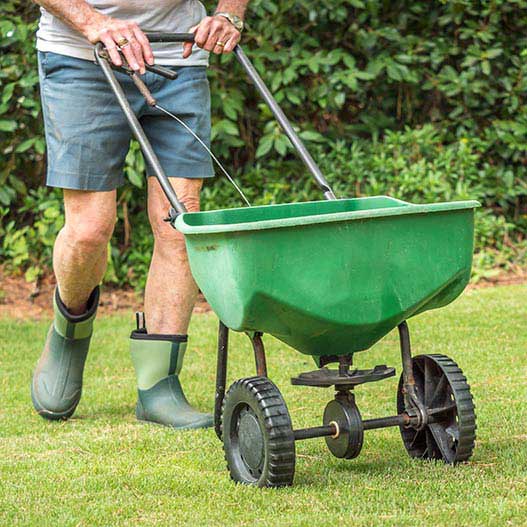
Commit to pick the right fertilizer.
Look for the label marked "16 0 8" if you need to buy fertilizer. Shop for "0" phosphorus and 50% "slowly available" nitrogen. Follow the summer ban from June 1st to September 30th. Do not exceed bag label application rates. Avoid soggy soils and rainy days. Avoid waterways. Clean up fertilizer spills. Keep grass clippings off the street. For more information: My Brevard Yard Program of Brevard Count's UF IFSA Extension Service at 321-633-1702 x224 or visit LagoonLoyal.com
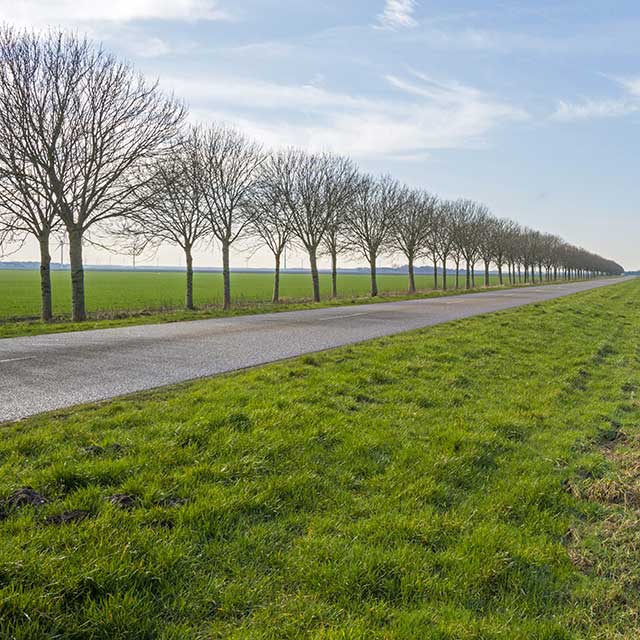
Swales
Swales are one of the most commonly used stormwater management practices. They slow down the rapid flow of stormwater runoff from highways and residential streets by ponding the water between two sloping sides.
By letting the ponded water soak into the ground, swales reduce the volume of pollutants thereby improving the quality of the stormwater that reaches the river or the lagoon. Swales have been created along roadsides throughout the County.
The following are ways to maintain swales to maximize their effectiveness:
- Let water pond. Runoff should temporarily pond in the swale for 24 to 36 hours.
- Mow the swale, but not too short.
- Remove leaves and grass clippings from swales.
- Minimize use of fertilizers, pesticides, and herbicides in swales and adjacent areas.
- Do not pile garbage, trash, leaves, tree limbs or garden debris in swales as this adds pollutants that can wash into downstream waters.
- Do not pave the swale as this will reduce the filtration and infiltration of runoff.
- Do not park vehicles in the swale, as this compacts the soil, reducing infiltration and increasing runoff.
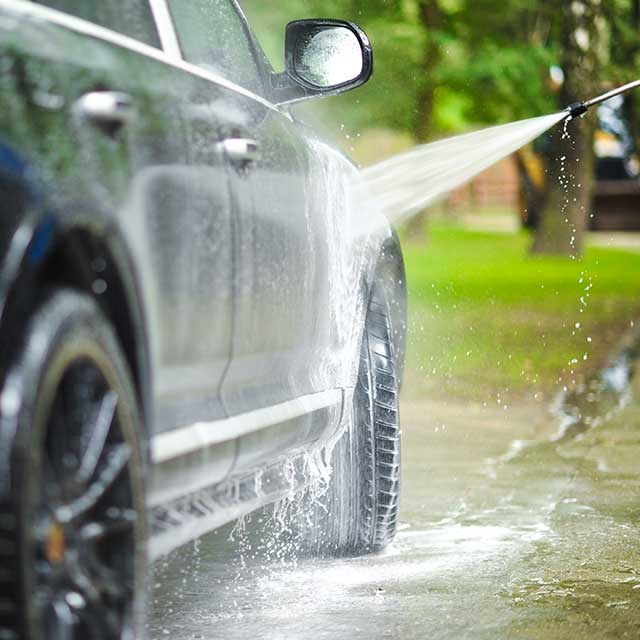
Car Care
Did you know that cars can cause water pollution? As we drive, our automobiles leave bits of tires, brakes and rusty metal on the street. When we park, our automobiles leave particles of oil, grease and transmission fluid on driveways and parking lots. Less visible are the tiny exhaust particles that gradually settle out of the air onto the roadways.
What happens to all this "car dirt" when it rains? Rain washes auto pollutants off the pavement, down a gutter and into storm drains. The storm drains are connected to pipes that carry the polluted water to local water bodies.
You can help stop this kind of pollution! The following are guidelines for actions you can take:
- Recycle Oil. Old motor oil can be reprocessed and used again. Just put it in a container with a tight lid and take it to a designated drop off area.
- Wash your car on the grass or (preferably) use a commercial car wash. The dirty water from your car will settle into the grass or be recycled at the car wash. If you wash your car on a paved driveway or parking lot, the dirty water ends up in the gutter. When it rains the pollutants are washed into the storm drain and discharged into surface waters.
- Keep your car tuned up. Cars that run smoothly burn less fuel and cause less pollution. Regular tune-ups reduce hydrocarbons, nitrous oxide and other pollutants that come from your car's exhaust pipe.
- Repair leaks. Spots on your driveway mean your engine, transmission or radiator is leaking. Have the leak repaired right away. Clean up the leak by using cat litter or another absorbent material to soak it up. Sweep up the cat litter, put it in a sealed bag and dispose of in the trash. Never wash a spill with detergent. Remember all that dirty water ends up in the lagoon.
- Check the pressure in your tires. One of the simplest and cheapest ways to prevent pollution is to keep your tires properly inflated. Under inflated tires reduce gas mileage, and they wear out faster! By reducing the amount of gas your engine burns, properly inflated tires reduce the amount of polluted exhaust that your car makes.
- Drive less! Driving less is a great way to prevent pollution. Most polluted stormwater runoff comes from heavily traveled streets and highways. Possible ways to reduce drive time are: Plan all your errands for one trip. Walk, ride a bike, take the bus or join a carpool. Even once or twice a week can make a difference.
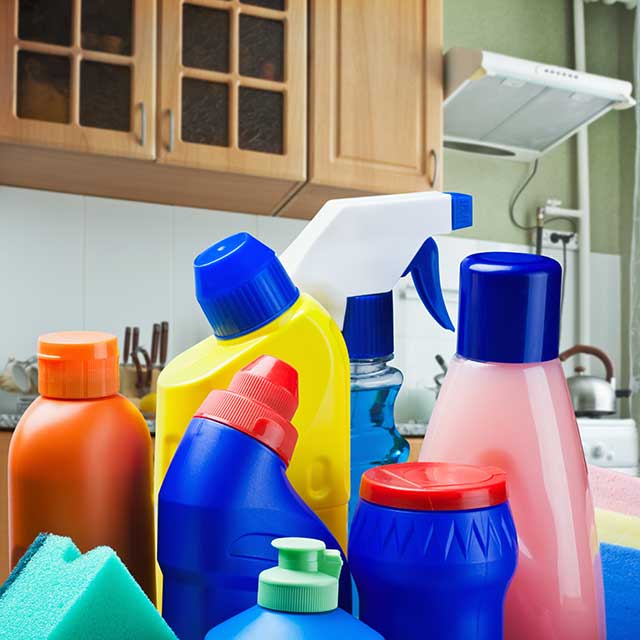
Household Waste and Chemicals
Dispose of household waste such as household cleaners, batteries and paints at designated collection centers. Avoid pouring these chemicals down the storm drains or into the streets. These materials are toxic and can kill both wildlife and plant life.
The Brevard County Solid Waste Department can advise you as to proper disposal methods and the collection site closest to your home. Solid Waste also offers a "Drop and Swap" program at the Central location in Cocoa for usable products brought in by residents. Residents are allowed to browse and pickup products including usable household chemicals, automotive fluids and paint products free of charge.
For more information on this program and others offered to Brevard County residents, please call them at (321) 635-7954 or check out the Brevard County Solid Waste website.
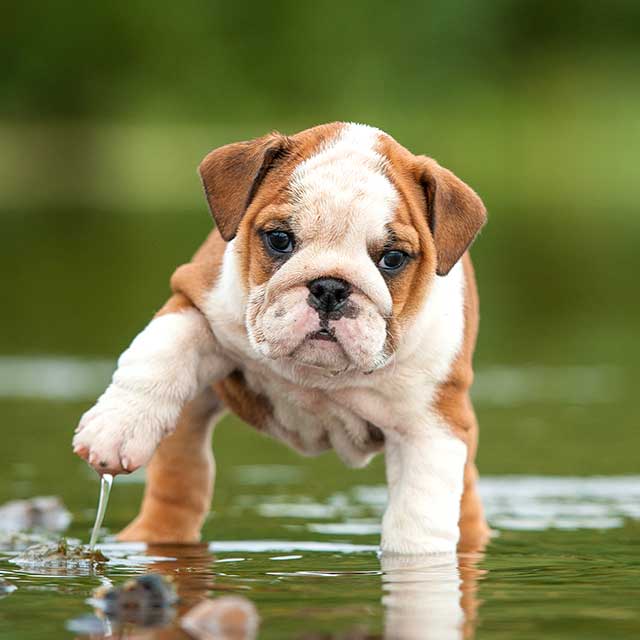
Pet Waste
Taking responsibility for cleaning up after your pet can help to prevent pointless pollution of our watershed. Brevard County Ordnance 14-59 requires that "no animal shall be permitted to defecate or urinate on public property. It shall be the responsibility of the owner or person in control of the animal to dispose of or remove excretions caused by the animal."
One pound of dog waste contains over 1.1 billion fecal coliform bacteria! Pet wastes can be the source for up to 95% of fecal coliform bacteria in stormwater run-off.
- Take along a plastic bag in which to put your dog's waste Then you may choose to flush the waste down the toilet, throw it in a trash can or bury it.
- Dispose of kitty waste and litter properly. Use a two-step process to clean out the cat box. First, scoop waste out of flushable litter and flush it down the toilet, taking care to minimize the amount of litter you flush. THEN, when litter is no longer usable, bag the litter and dispose of it in the trash. NEVER flush any kind of litter if you have a SEPTIC TANK.
- Leaving pet waste in your yard to decay can become a problem. To make sure water is not polluted by the waste, clean up any waste from areas near storm drains, ditches, wells and waterways. Always keep areas where children play free of wastes.
- If you don't want to pick up after your pet yourself, consider hiring a dog waste patrol service.
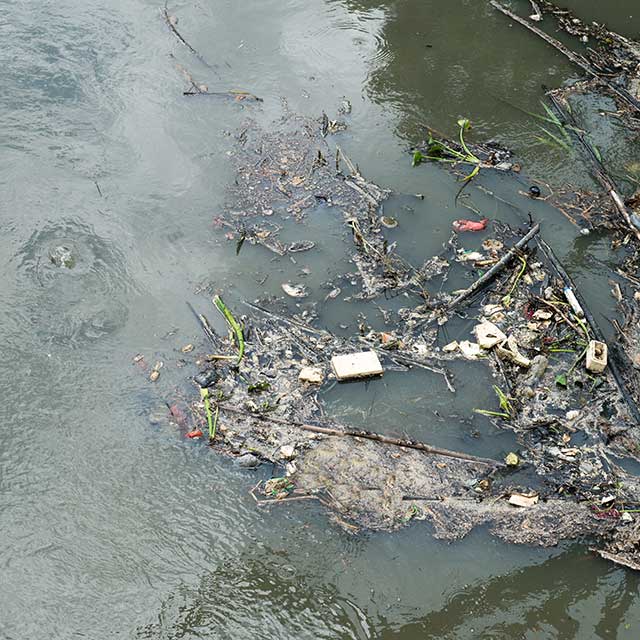
Litter Reduction / Illicit Discharge
Report Illicit Discharge by email or by phone: (321) 633-2014.
The presence of litter on Brevard County streets and right-of-ways detracts from the beauty of the County and encroaches upon the environment. Uncollected litter flows into stormwater drainage systems, creeks, and the Indian River Lagoon. Litter can become a breeding ground for disease-causing insects and rodents and it can trap, poison, and choke animals. Research also shows that uncollected litter attracts more litter.
Litter comes from non-point sources and can be attributed mainly to seven areas:
- Pedestrians or cyclists who do not use receptacles.
- Motorists who do not use car ashtrays or litter bags.
- Business dumpsters that are improperly covered.
- Loading docks and commercial or recreational marinas with inadequate waste receptacles.
- Construction and demolition sites without tarps and receptacles to contain debris and waste.
- Trucks with uncovered loads on local roads and highways.
- Household trash scattered before or during collection.
Illegal dumping is the disposal waste generated at one location and disposed of at another location without legal permission. Waster materials, consisting of trash, tires, yard waste, appliances, and other waste, are "dumped" on a property of without the permission of the property owner.
When rain soaks into the trash and debris, inks, dyes, and other pollutants can be leached out and can run-off to a storm drain or soak into the ground water.
Learn more about how you can prevent litter pollution .
Brevard County intends to comply with the Americans with Disabilities Act in providing accessible, usable services and facilities for all persons with disabilities to include information and documents on this website. If you require reasonable accommodation to participate in any County sponsored program, event, or service, or believe material on this website is inaccessible please contact the sponsoring department or complete the ADA grievance form located at ADACompliance@BrevardFL.gov
Adobe® Acrobat® Reader® DC is free software you can use to read and access the information contained within PDF files. Adobe Acrobat Reader DC contains many capabilities specifically designed to make it easier for people with disabilities to read PDF files, regardless of whether the files have been optimized for accessibility. It leverages accessibility functions built into Windows® and Mac OS systems and allows adjustment of user preferences to optimize the reading experience for a variety of disabilities.
